Behind the lens with Andy Warhol
Andy Warhol’s career-long obsession with photography will be the focus of a 2023 exhibition at the Art Gallery of South Australia that promises to shed fresh light on the American Pop artist as well as those he captured in his portraits – including his Australian friend Henry Gillespie.
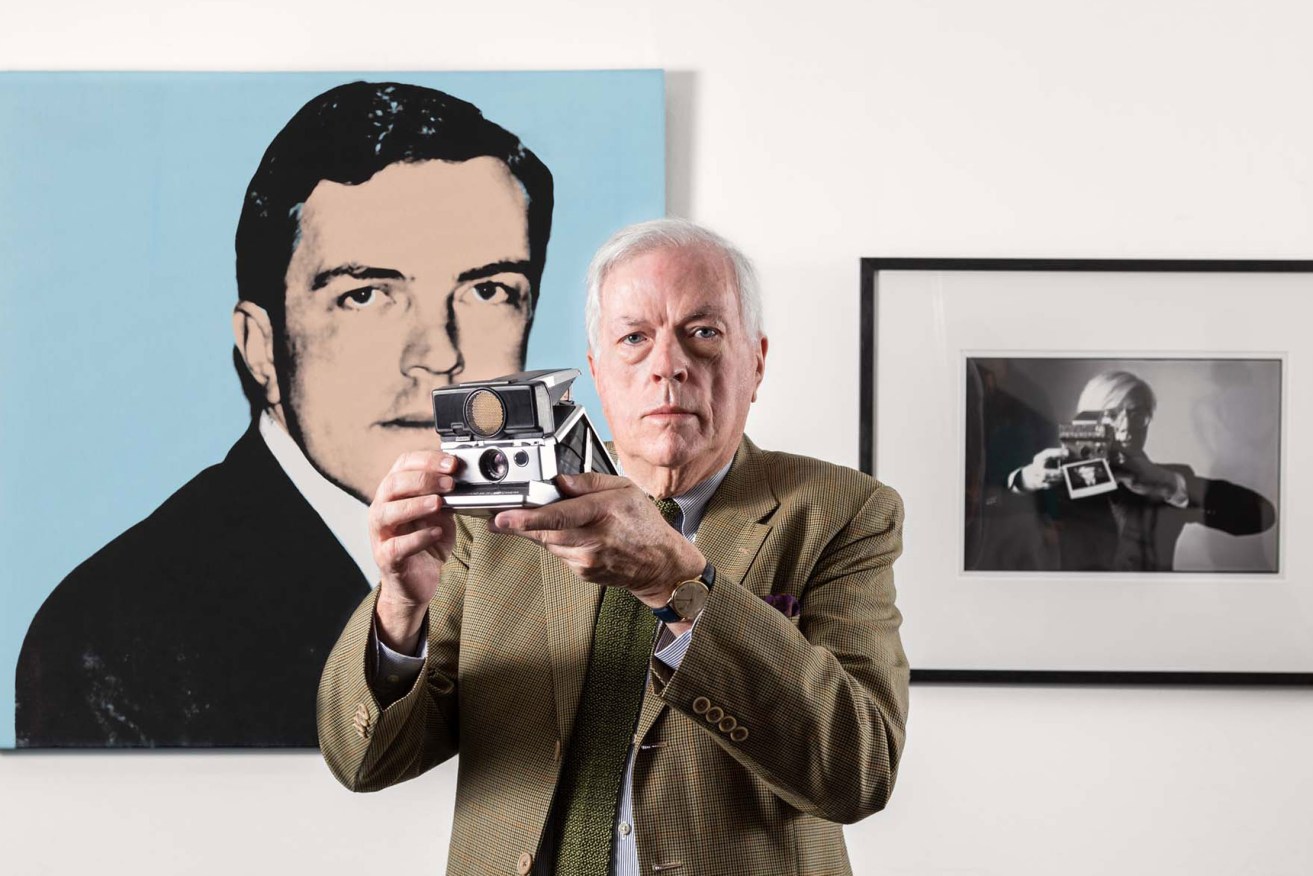
Henry Gillespie with Andy Warhol’s 'Henry Gillespie' portrait and Oliviero Toscani’s 'Andy Warhol', Art Gallery of South Australia. Photo: Saul Steed
Andy Warhol always knew he would become more famous after he died, according to one of only two Australians invited to sit for a portrait by the influential artist.
“He had great confidence in himself; he knew that his art was good,” says Henry Gillespie, who befriended Warhol after meeting him in New York in 1979 and was Australian editor of his magazine, Interview, from 1985-89.
Gillespie – in Adelaide this week for the Art Gallery of South Australia’s announcement of a new exhibition in 2023 based around Warhol’s photography – further illustrates the artist’s prophetic accuracy by recounting a conversation they had when he was invited to see the numerous Polaroids of him taken by Warhol, who suggested the resulting portrait would one day be part of a gallery collection.
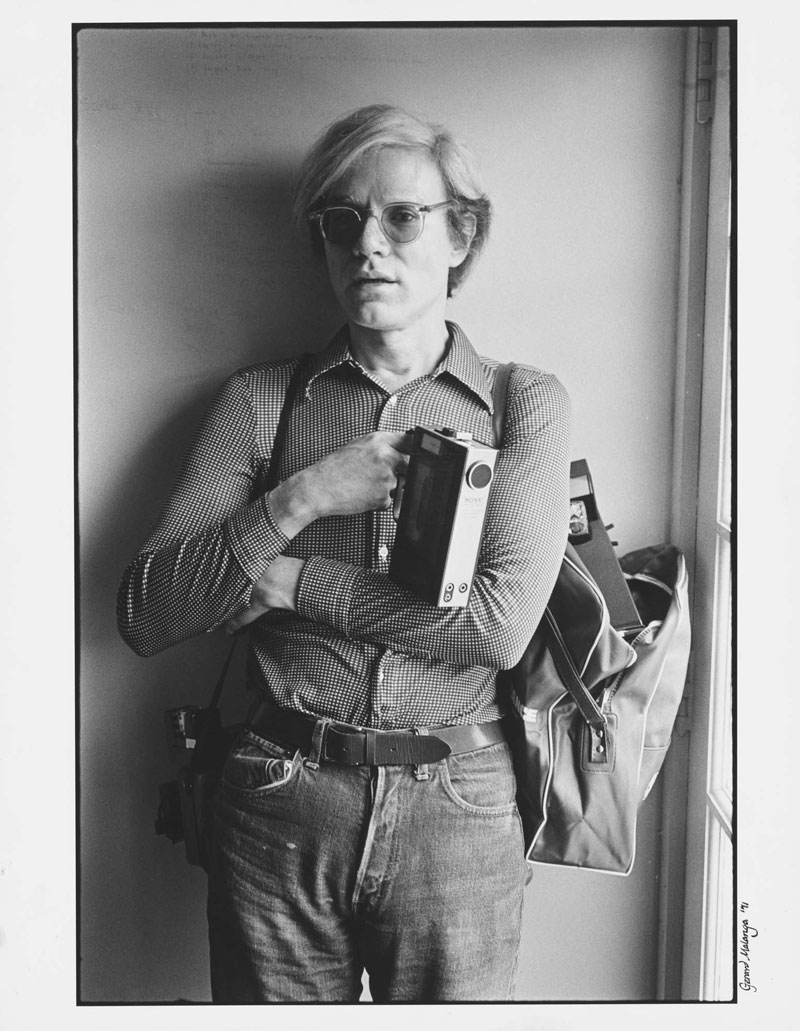
No title (Andy Warhol), 1971, by Gerard Malanga, gelatin silver photograph, 33.7 x 22.6cm (printed image), 35.6 x 27.8cm (sheet); National Gallery of Australia, purchased 1973.
“It was a bit overwhelming because it was like seeing your face on a billboard – it sort of takes your breath away. I looked and I looked and I was speechless; I didn’t know what to say. And then he said, ‘Do you like them?’. And I said, ‘Andy, they’re wonderful, they’re just wonderful.’
“Then he said, ‘How do you feel about the prospect of being institutionalised?’ I didn’t quite know what he meant for a second – but as time’s come to pass, I have been institutionalised. It’s very nice to be institutionalised… he could see into the future; he had such faith in his art and where it was all destined for.”
Warhol’s portrait of Gillespie will be displayed alongside those of celebrities such as Liza Minnelli, Elizabeth Taylor, Debbie Harry, John Lennon and Lou Reed in the AGSA exhibition Andy Warhol & Photography: A Social Media, the centrepiece of the 2023 Adelaide Festival visual arts program.
The exhibition promises to shed fresh light on Warhol through more than 250 works spanning photographs, screenprints, experimental films and paintings. The items are from national and international collections, as well as AGSA’s own collection of 45 Warhol photographs, and include 1960s Pop art portraits of Marilyn Monroe and Elvis Presley.
A Social Media curator Julie Robinson, AGSA’s senior curator of Prints, Drawings & Photographs, says photography underpinned Warhol’s whole artistic practice: “He took some 60,000 photographs in his lifetime. His candid images, which capture his own life as well as the lives of his celebrity friends, offer audiences a revealing insight into Warhol the person, taking viewers beneath the veneer of his Pop paintings and persona.”
For NSW-based Gillespie, being in Adelaide and seeing the plans for the exhibition conjures mixed emotions. While he is thrilled to see Warhol celebrated in such a way, he also feels sadness that his friend died at just 58 before he ever managed to visit Australia.
Sitting in a room at AGSA surrounded by photos of Warhol and copies of Interview magazine bearing portraits of stars including Madonna, Tom Cruise and Aretha Franklin, he explains that he first met the artist at the opening party of an exhibition of his work at the Whitney Museum of American Art in New York. The lawyer and arts enthusiast was introduced to the artist by his friend Tom Armstrong, the museum’s director.
“I’d always admired Warhol; I’d always thought he was a very significant artist. Tom introduced me and said, ‘This is Henry Gillespie from Australia.’ And he said, ‘Oh, Australia… doesn’t it take 30 days to fly there?’,” Gillespie recalls with a laugh.
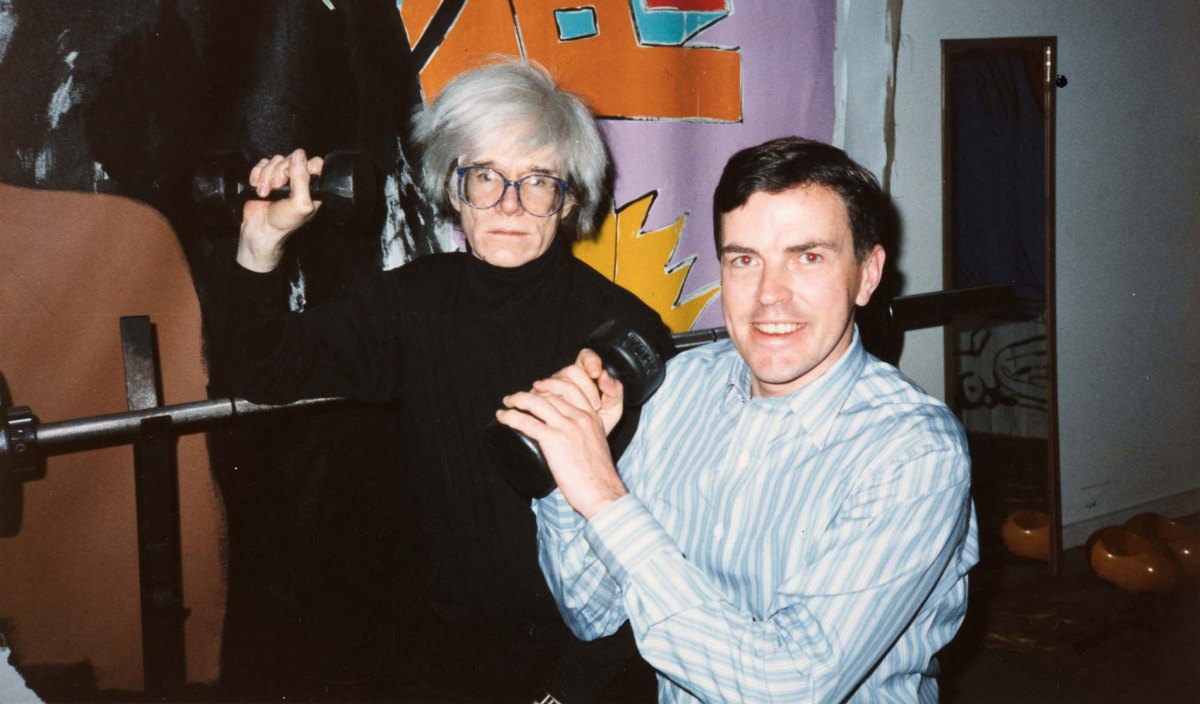
Andy Warhol and Henry Gillespie. Image courtesy Henry Gillespie
Warhol invited Gillespie to visit him at his New York studio The Factory and the two became friends, with Warhol appointing him Australian editor of Interview. They were making plans for Warhol to come to Australia in 1988, but then he died in early 1987 after gallbladder surgery.
Gillespie says Warhol used photography as an “aide memoire” in his art; he always carried a Polaroid camera and would pull it out to capture people or occasions. In preparation for a portrait, he would shoot a roll of film and select the perfect shot for a silkscreen.
He was really the original influencer
The photoshoot for Gillespie’s own portrait took only around 15 minutes, with Gillespie saying Warhol knew exactly what he wanted and was a consummate professional, but still managed to make his sitter feel like a million dollars.
The only other Australian subject of a Warhol portrait was the late philanthropist Loti Smorgon, who sat for him in New York in 1981.
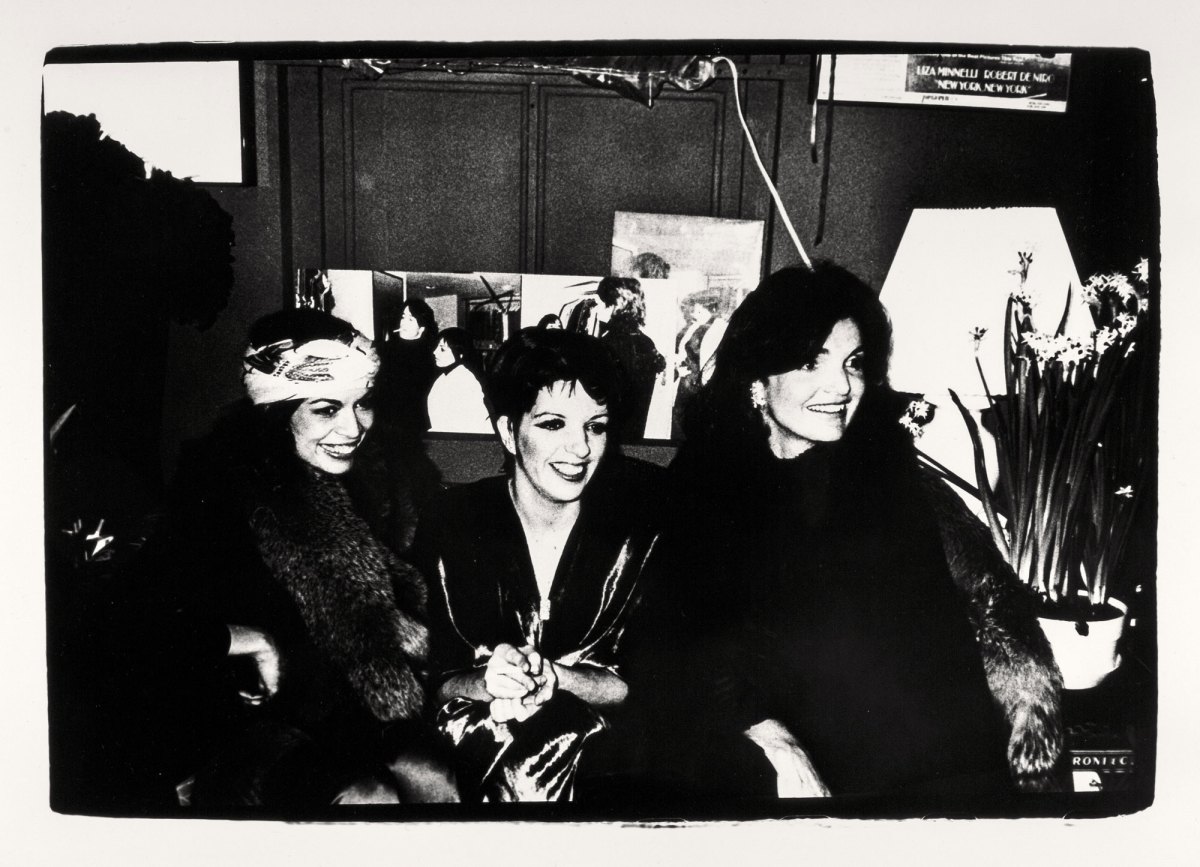
Andy Warhol, Bianca Jagger, Liza Minnelli and Jacqueline Onassis in Liza’s dressing room, New York, no. 12 from the portfolio Photographs, 1978; published 1980, New York; gelatin silver photograph, 30.0 x 42.3cm (image), 40.9 x 50.5cm (sheet); James and Diana Ramsay Fund 2020, AGSA, © Andy Warhol Foundation for the Visual Arts, Inc. ARS/Copyright Agency
During his career Warhol was criticised by some for his use of the Polaroid camera in his arts practice. He was also dismissed for being too commercial, yet as Gillespie points out, this was his modus operandi.
“He adopted it as his own and it was a very clever technique. He was really the original influencer… his whole life was about influence. It was all a process of enhancing his career and his career was sort of tied up with celebrity, and the more he was out and about, it worked for him, because he became known and it encouraged commissions and he got ideas.
“He loved getting ideas from people… In the early part of his career he was at a dinner party and he famously said to the lady sitting next to him, ‘What do you think I should paint?’… She said, ‘Well, what do you like?’ He said, ‘Money.’ And she said, ‘Well, paint money.’ So he painted the dollar bill series, which was very successful.”
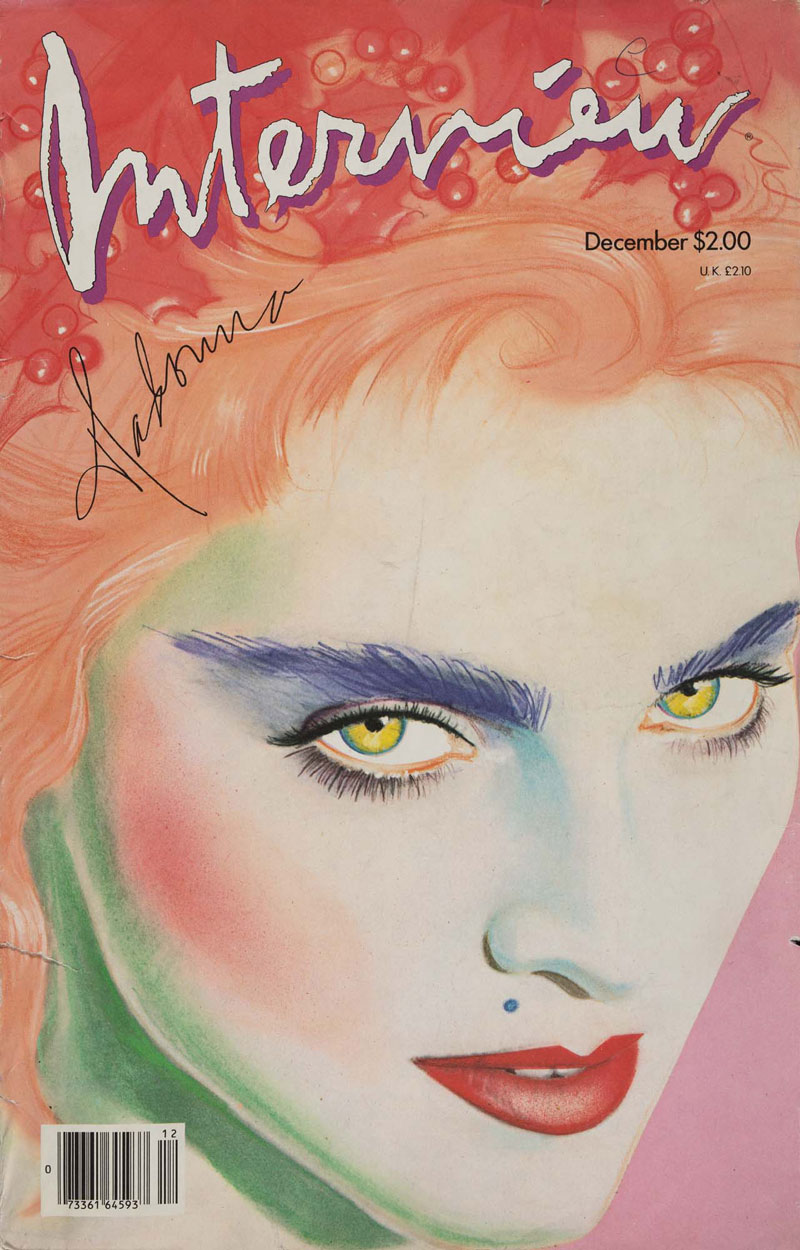
Richard Bernstein [cover art Madonna], Andy Warhol’s Interview Magazine, December 1985, Andy Warhol, New York City, 1985.
Although Warhol was considered eccentric in his lifetime, Gillespie says that behind the public persona he was “like a regular person”. He was intelligent, enjoyed talking about politics and current events, and – having growing up in a poor immigrant family – had an almost voyeuristic fascination with the lives of the rich and glamorous.
Art Gallery of South Australia director Rhana Devenport describes Andy Warhol & Photography: A Social Media as an exhibition for our times, saying it attests to Warhol’s “enduring relevance as an artist and cultural figure in an era defined by social media”.
Gillespie agrees that the artist remains relevant, suggesting it is partly the result of the clever way in which he used photography and ideas to influence so many people.
“He made people look at things and see things they hadn’t thought about; that was part of the power of him. We all go down the aisles in the supermarket and we see all the things but have you ever stopped to think of them as being art?”
In his time, Gillespie says, Warhol was almost as recognisable as the Statue of Liberty: “He was the symbol of New York, and in a wider sense America. But it was all about Manhattan. He loved Manhattan because in Manhattan you can be anything you want to be.”
Andy Warhol & Photography: A Social Media will be presented at the Art Gallery of South Australia from March 3 until May 14, 2023, as part of the 2023 Adelaide Festival program.




